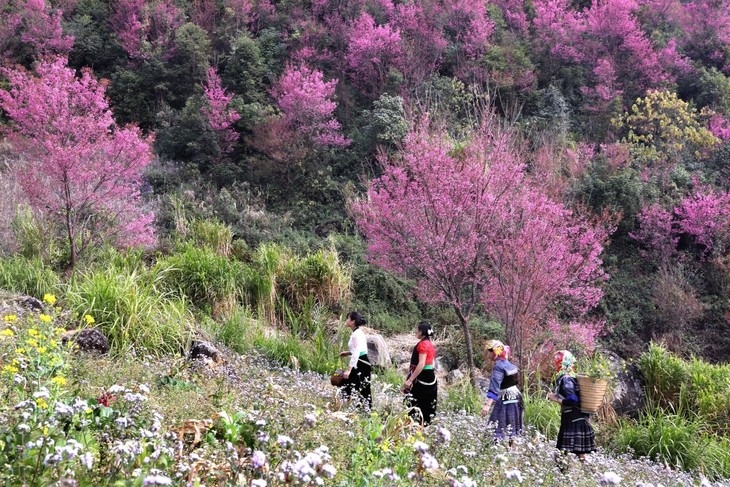The festivals offer an array of captivating events, including a seminar on Mu Cang Chai tourism, street parades, a Mong panpipe competition, and a photo exhibition featuring the To Day flowers. Visitors can have unique experiences with the “Cloud Hunting Journey-Discovering To Day Flowers” event and paragliding adventures.
There will also be folk games and cultural activities such as the Mong’s spinning toy performances, as well as booths introducing distinctive products from Mu Cang Chai and its sister districts.
The To Day flower, deeply connected to the lives of the Mong people in Mu Cang Chai, thrives in the cold winter with vibrant red-pink clusters. These flowers paint the hillsides with breathtaking beauty, signaling early spring in the northwest mountains.
During the festivals, visitors can embark on tours to admire the To Day flower while engaging in mountain climbing and exploring Mu Cang Chai’s stunning landscapes.
The Mong panpipe (Khen) is a form of folk performing art, cherished through generations. It is also a dancing instrument aligned with the human body shape, with performers demonstrating intricate moves like jumps, flips, and rolls while playing the instrument.
Giang A Pang is a Mong panpipe artist in Mu Cang Chai. He said: "We’re very happy that the panpipe art of the Mong people has been recognized as a national intangible cultural heritage. The recognition carries immense value for our community as it helps preserve our cultural identity. We will continue to pass it on to future generations."
The festivals are a celebration of the solidarity and cultural cohesion among ethnic groups in Yen Bai province, particularly the Mong people. It is also an opportunity for Mu Cang Chai to showcase its cultural heritage and tourism potential, encouraging local businesses and communities to participate in preserving and promoting these values and unique tourism products.
The festivals run until January 2, 2025.



